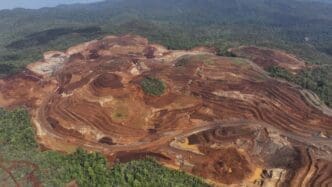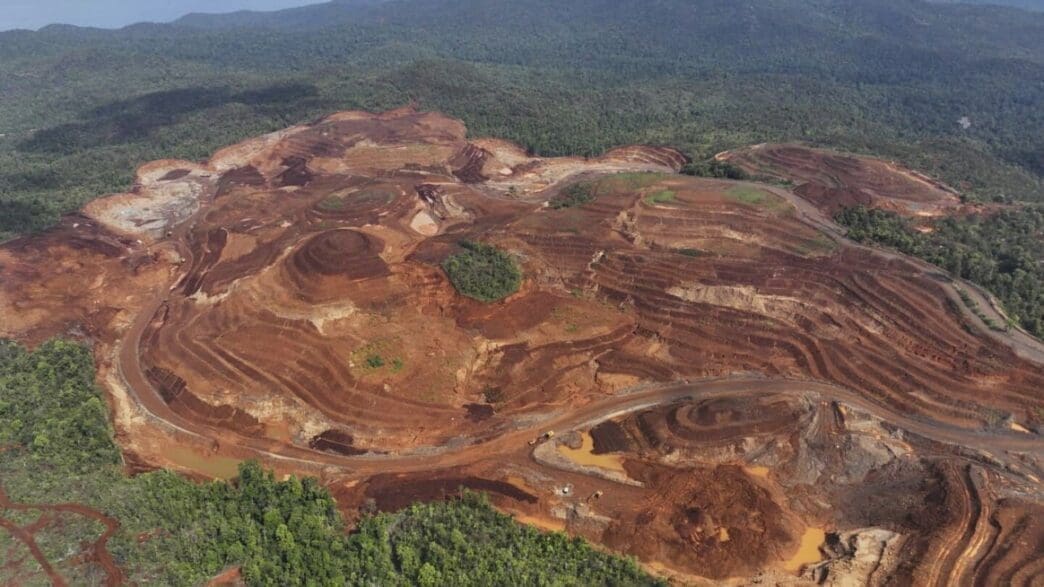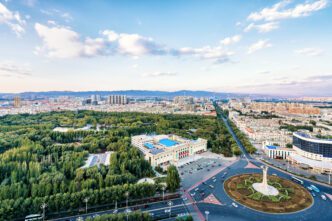In the heart of Indonesia, in the renowned Raja Ampat Regency, experts have raised concerns over the expanding nickel mining operations that pose a significant threat to one of the most biodiverse marine regions on the planet. A report by the environmental organization Auriga Nusantara highlights the alarming rate at which land is being converted for mining, potentially endangering the unique ecosystems that the region is known for.
The Raja Ampat Regency, located near West Papua, is celebrated globally for its rich biodiversity, hosting around 75% of the world’s coral species and over 1,600 species of fish, including critically endangered hawksbill sea turtles and vulnerable reef manta rays. This region, designated as a UNESCO Global Geopark in 2023, is not only a biological treasure but also a vital part of the international ecological heritage.
Auriga Nusantara’s recent report indicates that land dedicated to nickel mining in the region has expanded by roughly 494 hectares from 2020 to 2024, a rate nearly triple that of the preceding five years. This expansion has led to visible deforestation and the spread of mining operations across islands within the regency, including some within the protected UNESCO area. Concerns have been raised about the sediment from mining activities, which threatens to destroy coral reefs and disrupt surrounding marine ecosystems.
Timer Manurung, director of Auriga Nusantara, emphasizes that continued mining operations pose a critical threat to Raja Ampat’s marine biodiversity. He points out that as sedimentation increases, the coral and other marine life suffer significant damage. “As long as the nickel mining continues to operate, the sediment will destroy coral and its surrounding ocean ecosystem,” Manurung stated.
The push to expand mining comes as Indonesia seeks to capitalize on its abundant natural resources, which include the world’s largest known nickel reserves, driven by global demand for materials used in products such as stainless steel and electric vehicle batteries. However, these economic pursuits have drawn backlash for their environmental toll, risking irreversible damage to Indonesia’s natural landscape.
The environmental impact has been witnessed firsthand by local communities who depend on the area’s natural resources for their livelihoods. Edy Setyawan, a marine ecologist working in Raja Ampat, noted the decline in water quality since mining activities increased, with reports of murky waters impacting marine life and local fishing activities.
Despite a ruling by Indonesia’s constitutional court in March 2024 that small islands require special protection from potentially harmful activities like mining, operations continue largely unabated. According to Timer Manurung and other environmental advocates, the government’s issuance of mining permits for small islands contradicts these protections and underscores the need for sustainable practices in tandem with economic development.
Indonesia’s Ministry of Energy and Mineral Resources has acknowledged the necessity for rigorous environmental assessments, yet actions to enforce such standards remain insufficient. With the global focus on energy transitions and sustainable practices, the challenge remains to balance these needs without compromising environmental integrity.
The ongoing expansion of nickel mining in Indonesia raises serious environmental concerns, particularly for the ecologically sensitive Raja Ampat region. As the demand for nickel continues to grow, striking a balance between economic development and environmental stewardship is imperative to ensure the protection of these invaluable marine ecosystems for future generations.








